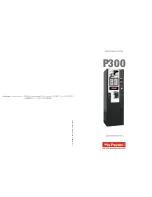
4. Wipe inside of Head Assembly Dome and the Rubber Ring Seal to
remove any moisture or residue. It is not necessary to remove the
Rubber Ring Seal in order to clean and dry it.
5. Rinse out the inside of the Boiling Chamber and use a sponge (or
NON-METAL scouring pad may also be used), to remove any left over
residue from the inside bottom, and rinse again.
Never submerge the
unit in water.
(Try to keep the outside of the unit dry while cleaning.)
If scale remains, pour in approx. one-half cup of standard white vinegar
and let set for an hour or so as needed and then loosen with a sponge,
(or NON-METAL scouring pad, etc.), and rinse out. Difficult residue
may require periodic use of a safe water scale cleaner such as that
supplied with the unit or available at H2oLabs.co.uk.
6. Fill the unit after cleaning in order to prepare for the next cycle.
7. Place unit on the counter-top and dry the exterior with a soft cloth
after each cleaning and filling to prevent water or rust spots. Also insure
that the Fan Plug and both Outlet Sockets on the Main Body are dry.
8. Position Head on the Body and
plug the Fan Cord firmly until it
has completely seated
into it’s outlet on the unit. Plug the Main Power
Cord into the unit and then into the household outlet. Position Carafe
and press the Reset Button when you are ready to begin the next cycle.
MAINTENANCE
Never use abrasive cleaners, wire brushes or scouring pads which can
damage the surface of the Boiling Chamber or the exterior. However,
NON-METAL scouring pads may be used for INTERIOR surface.
The Boiling Chamber has normal “welding spots” at the bottom that are
sometimes visible. You should not attempt to remove them.
To maintain maximum efficiency, whenever heavy dust accumulation is
apparent on the condensing coil in the top of the unit, vacuum or blow
out with air pressure, through the slots in the cover.
- 10 -






























